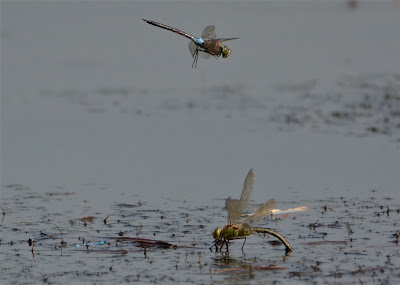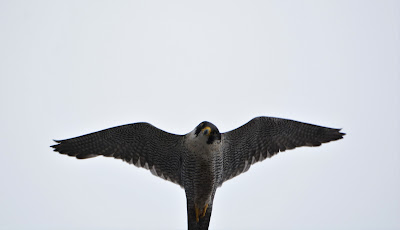It’s been a while since an update on the Power Station pair but very pleased to say that she laid 4 eggs back in March,3 of which hatched and satisfying to see from this, that 3 juveniles fledged in June.
Its particularly good on her part, in peregrine terms she is no spring chicken, arriving as a ringed adult in the winter of 2012/13,she is likely around 10+ years old. At this age fertility can become an issue on her part so she has done well.
The 3 juveniles as above have now fledged, there is one obvious male, a definite female and the 3rd is looking like another slightly smaller female than its bigger sibling female.
This year will likely be the last time the nest box tower will be used; autumn 2021 will see the opening of a new Des Res nest box integrated into the Power Station itself.
The Nest Tower itself has been an incredible success since its installation on this major project, it has seen continued annual occupation for breeding from 2014 to date, they have fledged 20 juveniles over 8 breeding seasons on it.
Some recent photos below from a very wet visit, well worth a look see if your in the area, especially early morning when the 3 juveniles are very active.
Adult Falcon - who's watching who?
Adult Falcon
Juvenile
Size difference - obvious male left
Lynx going past Parliament
A very wet Falcon
Adult Falcon roosting with the 3 juveniles
There are not too many high profile species that can adapt to a large scale major construction site and continue occupation and breeding. It speaks volumes about the character/tenacity of the species and the strength of the commitment and bond to the nest site.
In regards to the juveniles, I have been watching them quite a bit on and off camera, the little male often loses out to his bigger siblings when it comes to prey and food, I saw him recently claim a Ring Necked Parakeet only to lose it to his larger sibling. It is the way of things in Birds of Prey as we know, females are always bigger and stronger, in recent visits have already noticed that he has started to keep his own company.
For as long as I can remember, I have been coming here 20 years, there have been Black Redstarts on site, this year has seen not just one in occupation but 2 singing males.
Great to see their continued occupation also annually, it’s been a good year for them it seems in London, along with a number of other species on site, strategically positioned nest boxes have been targeted and placed for them.




























































